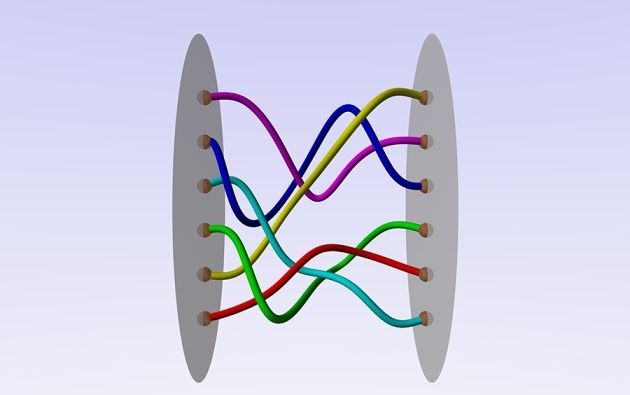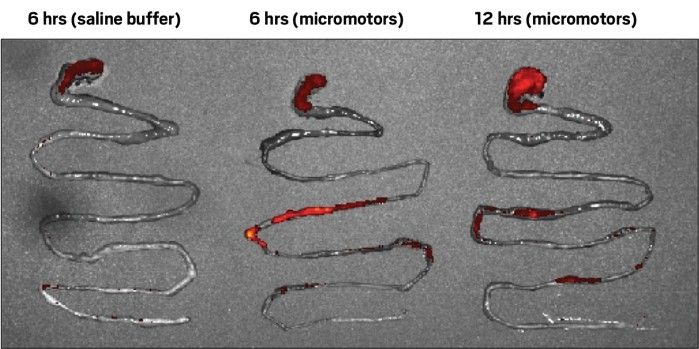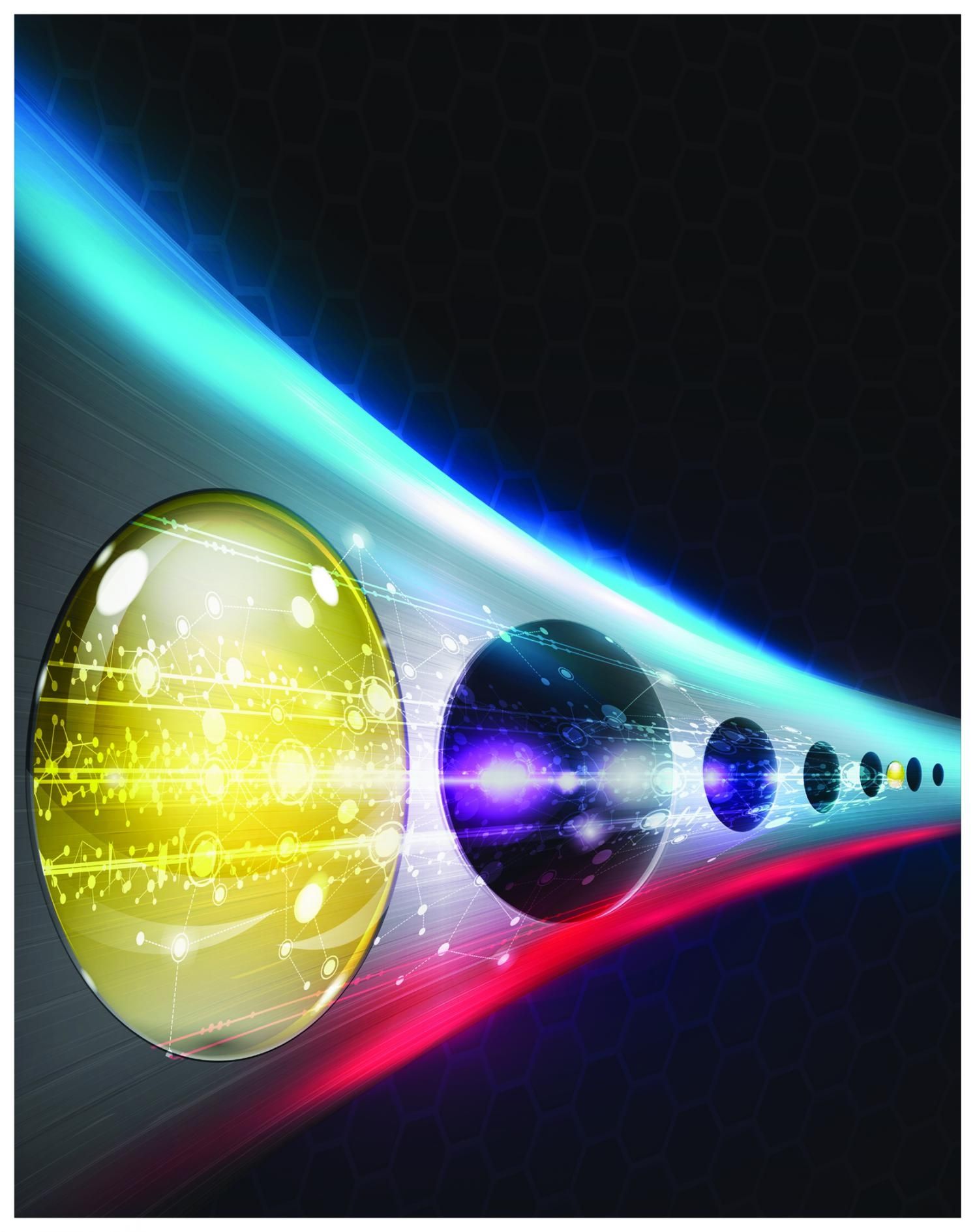Archive for the ‘particle physics’ category: Page 538
Oct 18, 2016
Self-propelling motors could target cargo to the gut
Posted by Karen Hurst in categories: biotech/medical, particle physics, robotics/AI
Could we see this technology offered via subscription as the a new home screening method to check for cancerous polyps or cells in the stomach, colon, or esophagus?
The human intestine is a nearly 8-m-long cache of bacteria, both good and bad. When disease-carrying microbes colonize different sections of the gut, they can cause problems like inflammation and diarrhea. Researchers have now developed tiny, self-propelling, biocompatible robots that could deliver drugs or imaging agents to a targeted section of the intestine (ACS Nano 2016, DOI: 10.1021/acsnano.6b04795). When swallowed, the devices pass through the stomach, travel a preset distance, and embed themselves in the intestinal lining.
A team led by Liangfang Zhang and Joseph Wang of the University of California, San Diego, created 15-µm-long, 5-µm-wide hollow cylinders made of gold and poly(3,4-ethylenedioxythiophene). They filled the tubes with magnesium particles and a fluorescent dye as cargo and then coated them with a pH-sensitive methacrylate-based polymer. The methacrylate coating protects the tubes from the acidic gastric fluid in the stomach, but starts to dissolve in the neutral pH intestinal fluid. By tuning the coating’s thickness, the researchers can control how far the devices travel via natural gut movement before the coating dissolves completely; thicker coatings last longer.
Continue reading “Self-propelling motors could target cargo to the gut” »
Oct 18, 2016
Australian scientists broke a new record for quantum computing stability
Posted by Karen Hurst in categories: computing, particle physics, quantum physics
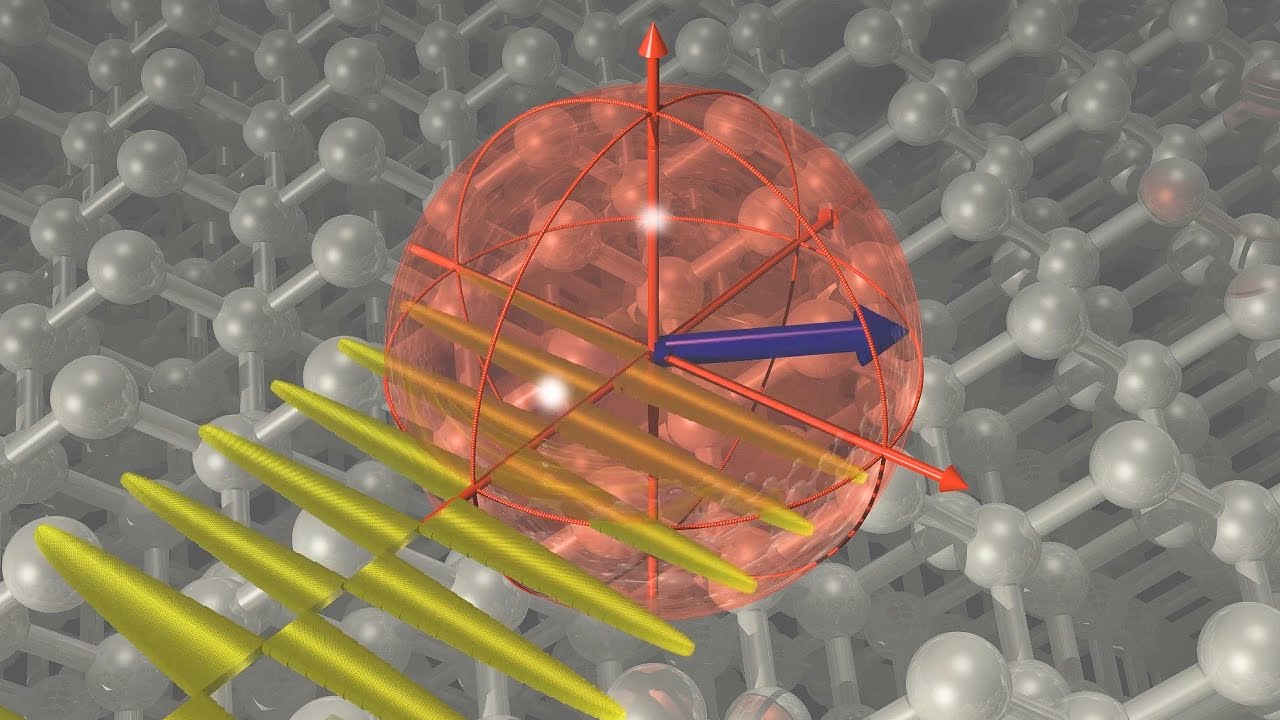
Nice.
Scientists in Australia have developed a quantum bit that’s 10 times more stable than existing technologies, and the new record could vastly expand the kinds of calculations quantum computers can perform.
Continue reading “Australian scientists broke a new record for quantum computing stability” »
Oct 16, 2016
Teleportation of light particles across cities in China and Canada a ‘technological breakthrough’
Posted by Karen Hurst in categories: particle physics, quantum physics
Ok; USA where are you nowdays?
Scientists have shown they can teleport photons across a city, a development that has been hailed as “a technological breakthrough”.
However, do not expect to see something akin to the Star Trek crew beaming from the planet’s surface to the Starship Enterprise.
Oct 15, 2016
Exceptionally robust quantum states found in industrially important semiconductor
Posted by Karen Hurst in categories: particle physics, quantum physics
Another huge leap forward in mass production of Quantum devices found.
Harnessing solid-state quantum bits, or qubits, is a key step toward the mass production of electronic devices based on quantum information science and technology. However, realizing a robust qubit with a long lifetime is challenging, particularly in semiconductors comprising multiple types of atoms.
The close collaboration between experiments in Prof. David Awschalom’s group and theory and simulations in Prof. Giulia Galli’s group, both in the Institute for Molecular Engineering, has enabled a crucial step toward solid-state qubits in industrially important semiconductors. In a paper, published Sept. 29 in Nature Communications, the two groups showed that electron qubits bound to atom-like defects in a commercial silicon carbide wafer can exhibit the longest electronic coherence times ever measured in a natural crystal.
Oct 15, 2016
Experiment to weigh ‘ghost particles’ starts in Germany
Posted by Karen Hurst in category: particle physics
BERLIN — Scientists in Germany have flipped the switch on a 60 million euro ($66 million) machine designed to help determine the mass of the universe’s lightest particle.
The Karlsruhe Tritium Neutrino experiment, or KATRIN, began tests Friday and is expected to begin making actual measurements next year.
Physicists at the Karlsruhe Institute of Technology hope the 200-metric-ton (220-ton) device will narrow down or even pinpoint the actual mass of neutrinos.
Continue reading “Experiment to weigh ‘ghost particles’ starts in Germany” »
Oct 15, 2016
Chinese scientists achieve high-power quantum computing
Posted by Karen Hurst in categories: computing, military, particle physics, quantum physics
China’s latest work on QC.
If early mechanical computers were never introduced to expand people’s computing ability, the invention of the atomic bomb would have gone out the window, and human history would have been rewritten.
This highlights the significance of computer simulation in scientists’ exploration of the physical world, which also explains their strong motivation in continuously pursuing higher computing power.
Continue reading “Chinese scientists achieve high-power quantum computing” »
Oct 15, 2016
Physics Breakthrough: Quasiparticle Formation Was Observed for the First Time Ever
Posted by Karen Hurst in categories: particle physics, quantum physics
In Brief:
- Normally formation happens in attoseconds and an attosecond is to a second what a second is to about 31.71 billion years.
- Further study of the particle could lead to quantum processors and ultra-fast electronics.
Oct 14, 2016
Diamonds aren’t forever: Team create first quantum computer bridge
Posted by Shane Hinshaw in categories: computing, particle physics, quantum physics
By forcefully embedding two silicon atoms in a diamond matrix, Sandia researchers have demonstrated for the first time on a single chip all the components needed to create a quantum bridge to link “People have already built small quantum computers,” says Sandia researcher Ryan Camacho. “Maybe the first useful one won’t be a single giant quantum computer but a connected cluster of small ones.”
Distributing quantum information on a bridge, or network, could also enable novel forms of quantum sensing, since quantum correlations allow all the atoms in the network to behave as though they were one single atom.
The joint work with Harvard University used a focused ion beam implanter at Sandia’s Ion Beam Laboratory designed for blasting single ions into precise locations on a diamond substrate. Sandia researchers Ed Bielejec, Jose Pacheco and Daniel Perry used implantation to replace one carbon atom of the diamond with the larger silicon atom, which causes the two carbon atoms on either side of the silicon atom to feel crowded enough to flee. That leaves the silicon atom a kind of large landowner, buffered against stray electrical currents by the neighboring non-conducting vacancies.
Oct 11, 2016
Physicists Have Quantum Computing A Step Closer To Reality
Posted by Karen Hurst in categories: computing, particle physics, quantum physics
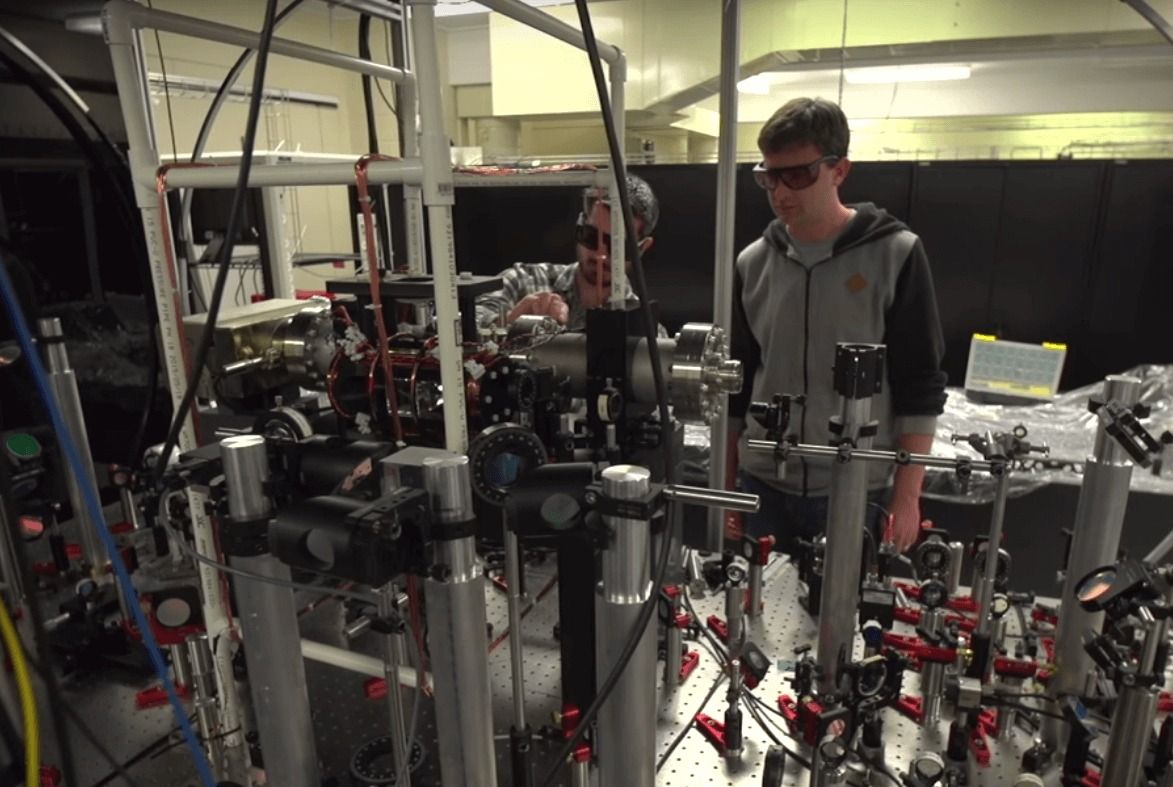
The world of quantum computing is a minefield. The more scientists think they know about it, the more they realize there’s so much more to learn. But, with thanks to physicists in a laboratory in Canberra, we are that one step closer to seeing a real life working quantum computer as they managed to freeze light in a cloud of atoms. This was achieved by using a vaporized cloud of ultracold rubidium atoms to create a light trap into which infrared lasers were shone. The light was then constantly emitted and re-captured by the newly formed light trap.
